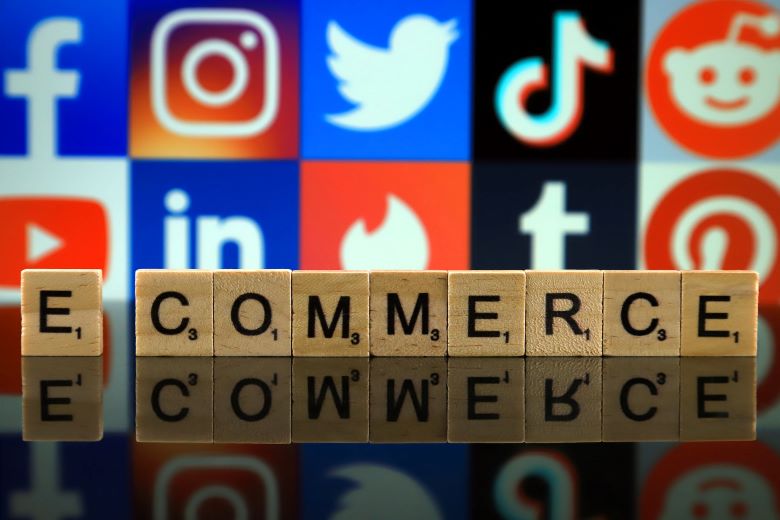What Facebook Shops means for the future of e-commerce
As the social media giant takes another step forward—and COVID-19 spurs more consumers to shop online—marketers and PR pros are rethinking online strategies.

The online shopping experience is only going to get more sophisticated.
Facebook Shops—a feature the company has also rolled out on Instagram—offers exciting new opportunities for brand managers to engage consumers online and drive sales.
As we reported on PR Daily:
In a blog post, Facebook wrote:
Shops let you choose which of your items you want to feature, merchandise with product collections, and tell your brand story with customizable fonts and colors. In Facebook Shops, you’ll be able to connect with customers through WhatsApp, Messenger or Instagram Direct to answer questions, offer support and more.
So how can marketers and PR pros take advantage of this new tech to become digitally dominant brands? Brian Gioia, director of product strategy at Scrum50, says Facebook’s place as a dominant force in the e-commerce landscape isn’t a done deal. Platforms like Amazon still have a built-in advantage.
“If I look at this through the eyes of my clients, the e-commerce landscape will only change if consumers begin to see Facebook’s platforms as a place to make purchases and not just for discovering products.” Gioia says. “The dilemma for Facebook is that its users don’t want to disrupt their experience of scrolling through their social feeds, but they also won’t make a purchase without doing a certain level of due diligence, such as comparing products and reading reviews.
“So it doesn’t matter how frictionless Facebook makes the shopping experience, some consumers just won’t convert on their platforms.”
Amazon also offers two things that Facebook doesn’t at present: reviews and logistics. Gioia says Prime memberships will be a good indicator of whether Facebook is making any inroads into Amazon’s e-commerce dominance.
“If a consumer already pays for Prime, why would they buy something on Instagram?” he says.
Facebook might offer an advantage for brands having a hard time standing out on Amazon’s crowded platform.
“A lot of the work we do with our clients on Facebook currently takes advantage of their microtargeting capabilities,” says Gioia. “Businesses that sell on Facebook Shops will also be able to take advantage of this capability, which means that biggest immediate impact will be with smaller brands. These brands can get lost in the sheer size of Amazon, and Facebook Shops can help them stand out to a specific group of people. Given this, it seems like Facebook is more likely to steal bottom-of-the-funnel advertising dollars from Amazon rather than e-commerce revenue.”
One industry that might see Facebook as an excellent alternative: fashion.
“For fast fashion at a lower price point, a shopping experience on Instagram seems like a great opportunity, especially if Facebook can secure exclusive deals,” Gioia says. “Sometimes we see our client’s products fit perfectly with an e-commerce feature or tool; this seems to be the case with fashion.”
Facebook has other, more obvious enticements for brand managers.
“Our clients always want to be where their customers are,” Gioia says. “Facebook has a lot of traffic, and for smaller brands it is easier to build a shop where the people are than to drive people to a standalone Shopify website. The reality is brands don’t have to choose between Facebook and Shopify; many will likely do both. It seems that the easiest way to get started on Facebook Shops is by linking a Shopify store.”
The future ahead
What’s next for e-commerce after Facebook’s move? There’s still plenty to watch in the coming year, particularly as brands adjust to the retail landscape resulting from the global COVID-19 pandemic.
“We thought the Amazon announcement about investing $4 billion in COVID-related expenses was very interesting.” Gioia says. “It seems like Amazon is trying to create a ‘virus-free’ supply chain as a new competitive advantage. Customers want to make sure they keep their families safe and that they aren’t putting workers in harm’s way when they make purchases online.”
Gioia also says he is watching how e-commerce blends with more traditional shopping experiences at a department store or grocery chain.
“The idea that Amazon might buy J.C. Penney is also very interesting, because there are a lot of things they could do with the retail locations,” he says. “Every day, we see firsthand the hurdles that still exist in e-commerce. Amazon could address many of these with innovations like enabling easy returns (like they currently do with Kohls), expand same-day pickups, offer in-store try-ons and increase sales of difficult-to-ship items.”
“Amazon could also turn J.C. Penney stores into a physical, branded Amazon experience for customers, the way Apple does with its retail stores.”
Gioia says grocery chains are moving heavily into e-commerce, and brands can benefit from their innovation.
“We have also started to work with our clients more on their ecommerce offerings with traditional grocery stores, like Kroger,” he says. “As these grocers expand their e-commerce capabilities, it will be interesting to see what happens with the relationship with Instacart moving forward.”
Regardless of the platform, Gioia says paid placements will be helpful for brands looking to stand out as digital marketplaces become more crowded.
“A lot of platforms, especially Amazon, have been developing new and innovative paid media offerings,” he says. “We’re focused on which ones will resonate with shoppers and what is the best content approach. Our clients have seen impressive initial results from Amazon’s new Lifestyle Search ads.”
Are consumers ready for more traditional marketing messages and sales pitches? Gioia says the tide might be changing there, too.
“I don’t think there will ever be a time when consumers are comfortable with messaging that comes across as opportunistic,” he says. “At the same time, consumers seem to be growing tired of all the commercials saying, ‘We’re here for you.’ It will be OK to acknowledge what is happening, but messaging should focus on the reasons consumers love a brand.”







